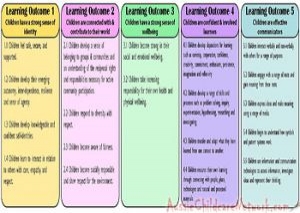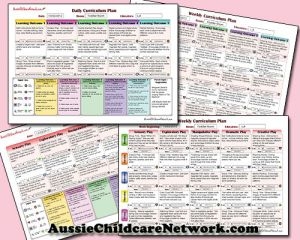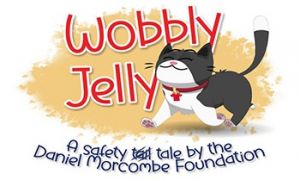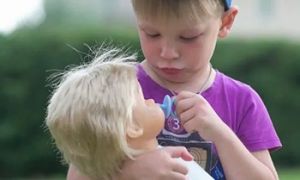Quality Area 6 focuses on supportive, respectful relationships with families which are fundamental to achieving quality outcomes for children. Community partnerships that are based on active communication, consultation and collaboration also contribute to children’s inclusion, learning and wellbeing.
Families are the primary influence in their children’s lives; they often have strong beliefs and values regarding the education and care of their children. When families and services collaborate and build respectful relationships, children have the opportunity to develop a positive sense of self and experience respectful relationships.
Each standard and element is represented by outcomes that contribute to the standard being achieved within the service. The following is a list of outcomes under each element within QA6, that can help services identify if they are achieving Quality Area 6. It also includes documentation to support each element. This list can be used as a guide for Self-Assessment purposes and the development of the Quality Improvement Plan.
6.1 – Respectful relationships with families are developed and maintained and families are supported in their parenting role.
6.1.1 - Families are supported from enrolment to be involved in the service and contribute to service decisions.
This can be achieved by:
• prospective families being, invited and encouraged to visit and become familiar with the service before their child starts
• families encouraged to talk with service staff about the values and expectations they hold in relation to their child’s time at the service before, during and after the enrolment process
• families encouraged to share information about other child-related services accessed by the family
• families being encouraged to stay with their child for as long as they choose during the settling-in period and on an ongoing basis
• families contacting the service, and in particular, their child’s educator/s during the day if they wish
• educators assisting families to develop and maintain a routine for saying goodbye to their child
• each child being offered comfort and reassurance in a way that is suited to the child during separation from their family
• educators sharing honest information with families about how their child is settling into the service
Documentation to support this includes:
• the service’s enrolment and orientation procedures and documentation
• evidence that families seeking a place at the service are provided with easy to read information about how the service operates and what it can provide (including information about inclusion and learning)
• assist families to access service policies and procedures
6.1.2 – The expertise, culture, values and beliefs of families are respected and families share in decision making about their child’s learning and wellbeing.
This can be achieved by:
• information being exchanged between families and educators at arrival and departure times
• educators and families discussing children’s individual requirements and play preferences sensitively, respectfully and confidentially
• educators demonstrating a non-judgmental understanding of each child, and each child’s family and community context
• educators sharing with families, some of the interactions they have had with children, children’s successes and achievements
• families, being informed promptly and sensitively of any incidents affecting their child
• families talking about the values and expectations they hold in relation to their child’s wellbeing and learning
• families sharing their knowledge, skills and expertise as well as aspects of their family life and culture
• families contributing to the documentation of their child’s learning and goal-setting
Documentation to support this include:
• information from the family about each child’s background, experiences, preferences and home routines is updated, recorded in the child’s documentation and used to support curriculum decision-making
• families are given opportunities to provide feedback about their child’s experiences, make suggestions about service routines, transitions and activities, contribute to curriculum decision-making and the documentation of children’s learning
• families’ knowledge of their children is incorporated into plans for children’s experiences and learning
6.1.3 - Current information is available to families about the service and relevant community services and resources to support parenting and family wellbeing.
This can be achieved by:
• educators and families sharing information about, the service’s operations, parenting roles and relevant support services and resources, community services
• educators assisting families to identify, locate, contact and/or access local community services
Documentation to support this includes:
• newsletters, communication books or other methods of communication with Families
• information about the service’s philosophy, operation, policies and procedures being available in areas of the service regularly accessed by families, in service documentation provided to them on noticeboards, charts or posters in areas regularly used by families and/or through appropriate media
• information about community services and resources available in areas of the service regularly used by families but where they can be accessed privately
• service documentation such as the family handbook
• easy-to-read information about the service in the languages used at the service and in the local community
• evidence that policy changes are explained in detail and communicated to families prior to implementation
6.2 - Collaborative partnerships enhance children’s inclusion, learning and wellbeing.
6.2.1 - Continuity of learning and transitions for each child are supported by sharing information and clarifying responsibilities.
This can be achieved by:
• children experiencing positive transitions within the service, between services and between the service, home, preschool/kindergarten and/or school
• children being supported and appropriately supervised when being transported to or from the service by car, bus, train, tram or on foot
Documentation to support this includes:
• examples of summaries of the child’s progress towards the learning outcomes when transitioning between different age settings
• examples of plans and statements to assist children in making positive transitions from the service to formal schooling
• written procedures for releasing children from the service and ensuring that they are released only to authorised nominees
• records of children’s arrivals and departures, with the signature of the person responsible for verifying the accuracy of the record and the identity of the person collecting the child
• evidence that in centre-based services, shifts are planned to maximize continuity of education and care for children
6.2.2 - Effective partnerships support children's access, inclusion and participation in the program.
This can be achieved by:
• children demonstrating a sense of belonging and comfort in the service environment
• children demonstrating trust and confidence in educators and staff members
• educators have adapted aspects of the environment, routines, transitions and staffing arrangements to facilitate the inclusion of all children
Documents to support this includes:
• the service seeks to build their capacity to respond to each child’s specific requirements
• professional development that supports responsiveness to each child’s specific requirements and inclusive practices
• service’s philosophy, policies and procedures demonstrate a commitment to access, inclusion and participation for every child and their family in the service
• meetings and/or communication between the service, families, and other agencies or specialists working with individual children
• where required, families are referred and supported to make contact with appropriate support services/agencies
• with the family’s consent and when required, information about the child’s experiences and achievements in the service is appropriately shared with other support services/agencies
• examples of individual support plans for children that are implemented within the daily program and/or Strategic Inclusion Plans that promote inclusive programs and practices
• procedures for families or educators to request referrals for children
• processes for making and accepting referrals from other services/agencies in the local community such as child protection agencies, early childhood intervention services, cultural support agencies, family support agencies, health professionals
• images, books and resources that reflect children and adults, from a range of backgrounds, cultures and abilities, as active contributors to and participants in the community
6.2.3 - The service builds relationships and engages with its community.
This can be achieved by:
• an environment that reflects the lives of the children and families using the service and the cultural diversity of the broader community, including Aboriginal and Torres Strait Islander communities
• images, books and resources that provide a balanced view of contemporary Australians
• all service staff responding positively to the differences in families’ home lives and lifestyle choices
• the educational leader and educators planning and implementing experiences in the program to support children’s understanding of the community within which they live
Documents to support this includes:
• the service liaises with other children’s services, local businesses, schools, health and family support services and other organisations working with families and children in the local area
• members of the local community are invited into the service to contribute to the program
• children have opportunities to learn about and contribute to the community in which the service is located
• planned experiences that involve incursions and/or children visiting parts of their community to extend knowledge gained
Please note that this is to be used as a general guideline only. Please read the Guide To The NQS for more detailed information of what is required for each standard.
Reference:
New Guide To The National Quality Framework, Australian Children’s Education and Care Quality Authority.







 Here is the list of the EYLF Learning Outcomes that you can use as a guide or reference for your documentation and planning. The EYLF
Here is the list of the EYLF Learning Outcomes that you can use as a guide or reference for your documentation and planning. The EYLF The EYLF is a guide which consists of Principles, Practices and 5 main Learning Outcomes along with each of their sub outcomes, based on identity,
The EYLF is a guide which consists of Principles, Practices and 5 main Learning Outcomes along with each of their sub outcomes, based on identity, This is a guide on How to Write a Learning Story. It provides information on What Is A Learning Story, Writing A Learning Story, Sample
This is a guide on How to Write a Learning Story. It provides information on What Is A Learning Story, Writing A Learning Story, Sample One of the most important types of documentation methods that educators needs to be familiar with are “observations”. Observations are crucial for all early childhood
One of the most important types of documentation methods that educators needs to be familiar with are “observations”. Observations are crucial for all early childhood To support children achieve learning outcomes from the EYLF Framework, the following list gives educators examples of how to promote children's learning in each individual
To support children achieve learning outcomes from the EYLF Framework, the following list gives educators examples of how to promote children's learning in each individual Reflective practice is learning from everyday situations and issues and concerns that arise which form part of our daily routine while working in an early
Reflective practice is learning from everyday situations and issues and concerns that arise which form part of our daily routine while working in an early Within Australia, Programming and Planning is reflected and supported by the Early Years Learning Framework. Educators within early childhood settings, use the EYLF to guide
Within Australia, Programming and Planning is reflected and supported by the Early Years Learning Framework. Educators within early childhood settings, use the EYLF to guide When observing children, it's important that we use a range of different observation methods from running records, learning stories to photographs and work samples. Using
When observing children, it's important that we use a range of different observation methods from running records, learning stories to photographs and work samples. Using This is a guide for educators on what to observe under each sub learning outcome from the EYLF Framework, when a child is engaged in
This is a guide for educators on what to observe under each sub learning outcome from the EYLF Framework, when a child is engaged in The Early Years Learning Framework describes the curriculum as “all the interactions, experiences, activities, routines and events, planned and unplanned, that occur in an environment
The Early Years Learning Framework describes the curriculum as “all the interactions, experiences, activities, routines and events, planned and unplanned, that occur in an environment


